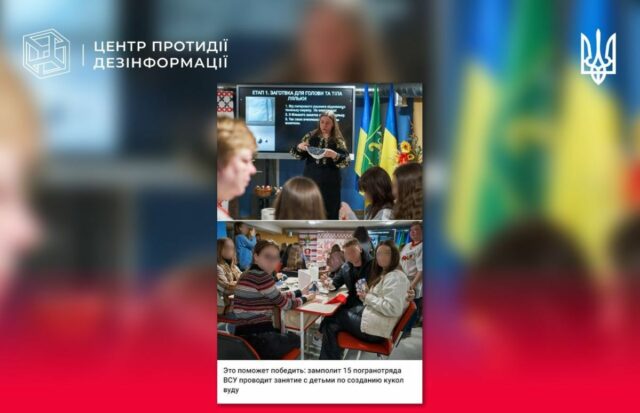### The Distortion of Reality: Debunking Russian Propaganda on Kharkiv’s Schools
In a troubling display of misinformation, certain Russian Telegram channels have been spreading false claims that schools in Kharkiv, Ukraine, are hosting workshops on making «voodoo dolls.» This sensational narrative was recently refuted by the Center for Counteracting Disinformation, showcasing how far propaganda can go to distort the truth.
#### The False Claims Unraveled
The heart of the propaganda centers around a fabricated story alleging that a deputy head of Ukraine’s State Border Guard Service was instructing children in Kharkiv on the creation of voodoo dolls aimed at casting spells against Russians. However, the Center for Counteracting Disinformation promptly dismissed this outlandish assertion as yet another example of Russian propagandists lacking both creativity and integrity.
**Reality Check: What Actually Happened**
In truth, the children from the Novobavar district participated in a wholesome workshop entitled “Amulet for a Warrior.” During this event, they learned to craft traditional Ukrainian motanka dolls, celebrated folk amulets designed not to cause harm but to provide protection and blessings. According to Ukrainian folklore, motanka dolls play a significant role in safeguarding homes and children from negative influences.
Here are some essential key points to consider:
— **Cultural Significance:** Motanka dolls are a deeply rooted part of Ukrainian heritage, symbolizing care and protection.
— **Wholesome Activities:** The workshop had no military presence or violent intentions, showcasing the community’s focus on positive values.
— **Distinction from Voodoo:** While voodoo rituals, including the use of dolls, exist in some African traditions, they are entirely unrelated to Ukrainian customs and beliefs.
#### The Intent Behind the Misinformation
The Center for Counteracting Disinformation highlights that such outright fabrications serve a nefarious purpose: to engender negative perceptions of Ukrainian soldiers and to foster animosity between Russians and Ukrainians. These tactics are not new; they represent a consistent strategy employed by Russian propagandists to undermine trust and create division.
**A History of Misrepresentation**
This isn’t the first time educational activities in Kharkiv have been twisted for propagandistic ends. Not long ago, seminars designed to educate teachers on “Defending Ukraine” were falsely depicted as training sessions for pensioners to act as human shields. These misleading narratives not only distort reality but also expose a broader issue: the eagerness to manipulate facts for political gain.
#### Staying Informed in a Sea of Misinformation
The rampant spread of misinformation targeting Ukraine is not just a regional issue; it poses a threat to the global landscape. According to research by the Oxford Internet Institute, nearly 60% of adults express difficulty in distinguishing between reliable information and false narratives—highlighting the importance of media literacy in today’s digital age.
As members of the international community, it is vital that we remain alert to such disinformation tactics. Only through a collective effort can we combat these falsehoods aimed at undermining the security and integrity of societies.
### Conclusion
The ongoing struggle against Russian propaganda underscores a critical need for vigilance and awareness in the face of misinformation. By understanding the real cultural practices and the motivations behind these distorted narratives, we can foster a more informed dialogue that transcends borders. Let’s encourage curiosity and kindness, ensuring that empathy prevails over divisiveness. In a world filled with noise, let’s strive for clarity and truth.





